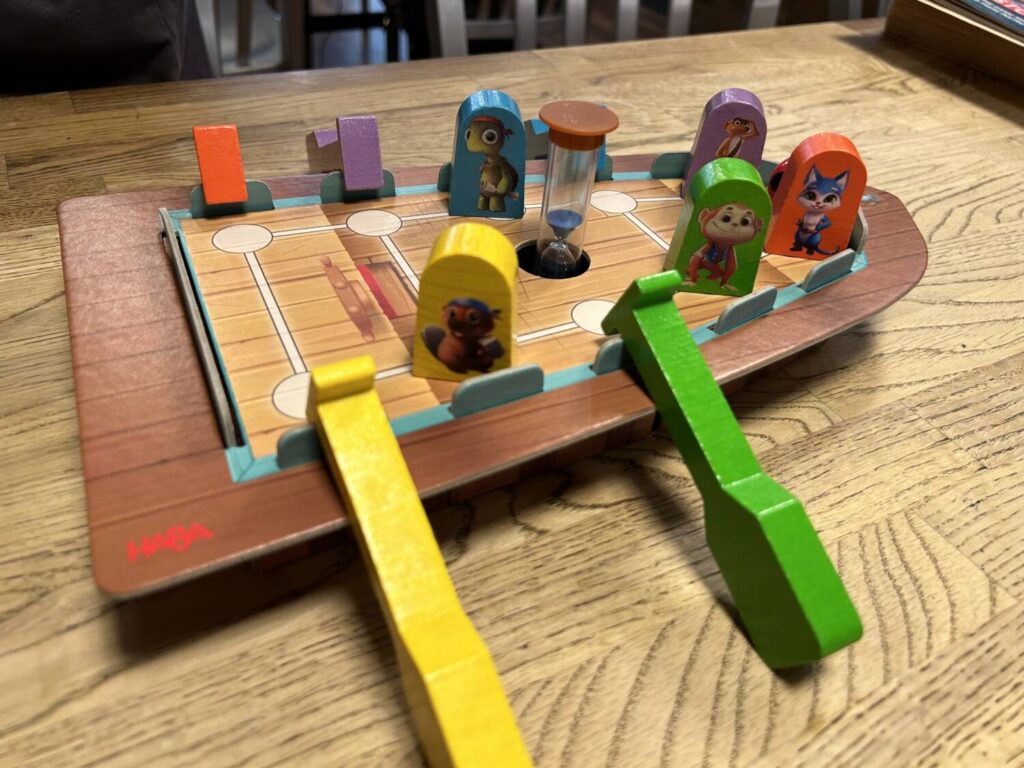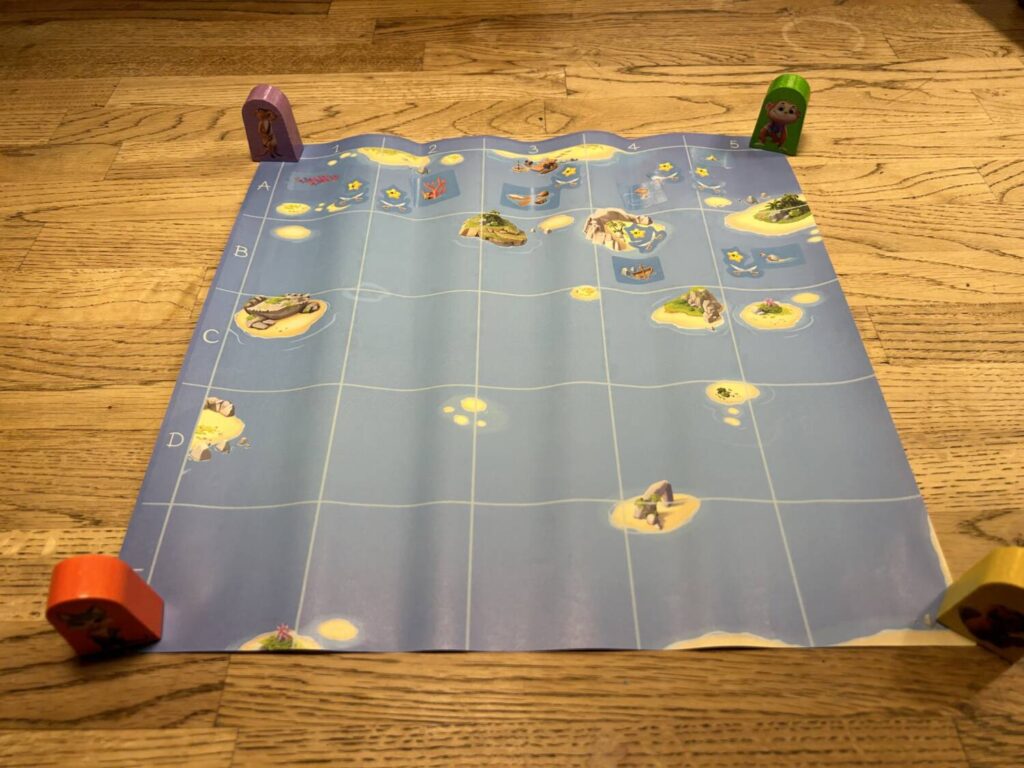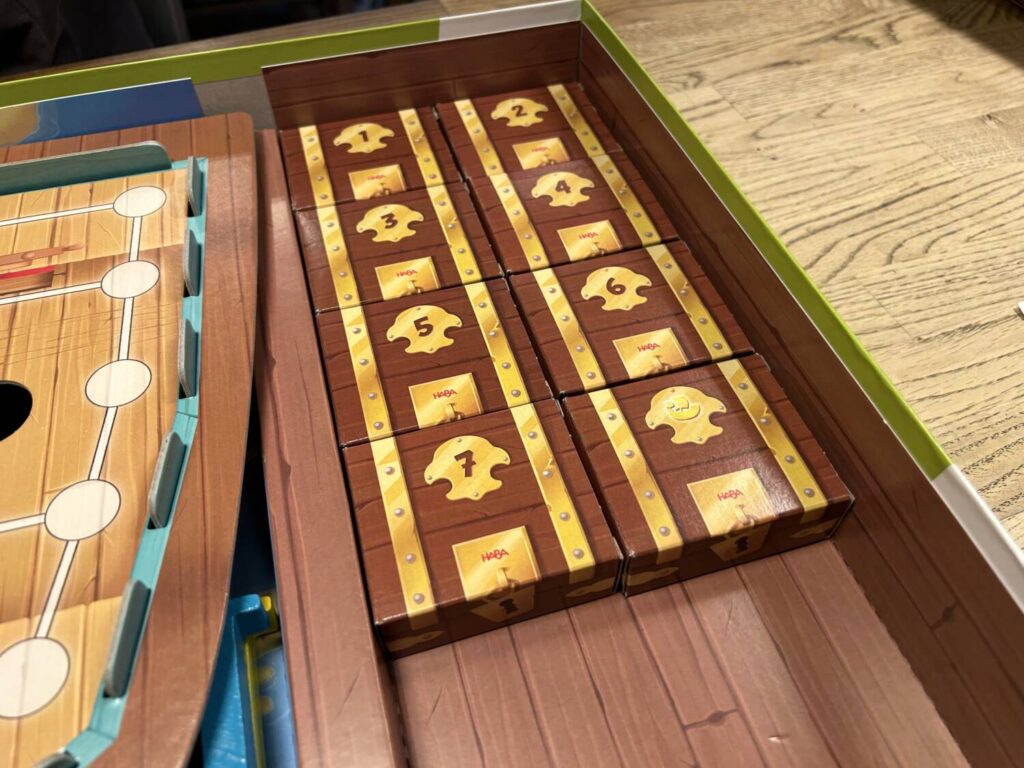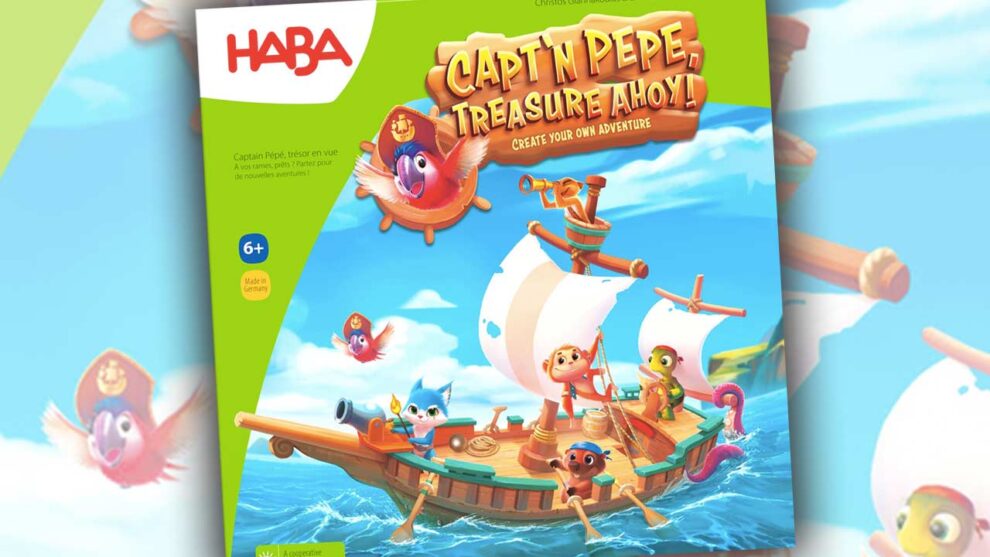Disclosure: Meeple Mountain received a free copy of this product in exchange for an honest, unbiased review. This review is not intended to be an endorsement.
Look, I’m an easy sell. I’m a sucker for novelty. Tell me you’ve got a legacy game for children, and I’m going to be curious. Legacy games generally cater to adults, which makes sense. They require paying attention to the same thing for an extended period of time. This is not a strength for which children are celebrated. More importantly, the stories are usually only suggested through fragments of information, rather than fleshed out like a storybook.

Along Came Pepe
Capt’n Pepe: Treasure Ahoy! aims to change all that. Over the course of twenty-five episodes, you follow the adventures of the good capt’n and his anthropomorphic crew, helping them track down seven magic treasures in their quest to stop the evil Captain Goldtooth.
The game itself is a straightforward sliding puzzle. Working together, players move the various crew members of the Melody to their stations. Passing Capt’n Pepe from player to player, the active player moves one crew member one space. That’s it. You keep going until all the crew members are where they’re meant to be. For children, the game is engaging, quick, and challenging. As an adult, it’s pretty simple, though there are moments of surprising finesse.

Even young children (6 or so) can be left to play it on their own, though that may not be their preference. I played along with the children I taught it to, and they enjoyed the game quite a bit more while I was a part of things. Without an adult, it’s easy for younger children to back themselves into a corner. If the adult moves a particular piece, they start asking themselves “Why,” assuming I did so for a good reason. It helps direct their problem solving through the more difficult stretches of the game.
Stickers and Stories
Each chapter of Capt’n Pepe starts with a bit of the continuing story of the Melody, and wraps up with the same. The game itself is played in intense four-minute bursts of giggling, frenzied passing, and frantic communication. The story gives everyone a chance to gear up and a chance to calm down. The writers have done a charming job. While I read most of the chapters out loud to everyone playing, the language is straightforward enough for young readers to have a go should they be so inclined.
Good performance is rewarded with stickers, which are added to the map as you track your course. You may also accumulate treasure to be added to your hoard. Every chapter can be played again, so a poor performance won’t limit your ability to collect all the rewards.

The children I played Capt’n Pepe with absolutely adored it. They asked if we could play it again the next day. They asked if the store was going to have it available for sale soon. They quickly developed favorite characters and favorite pieces. I’m no expert, but I recognize a hit when I see one.
I have no idea if Capt’n Pepe: Treasure Ahoy! is the first in a planned series of games or not. At the very least, the colon leaves open the possibility. I hope it is. I’d follow that parrot anywhere.












